#samkhya
Photo
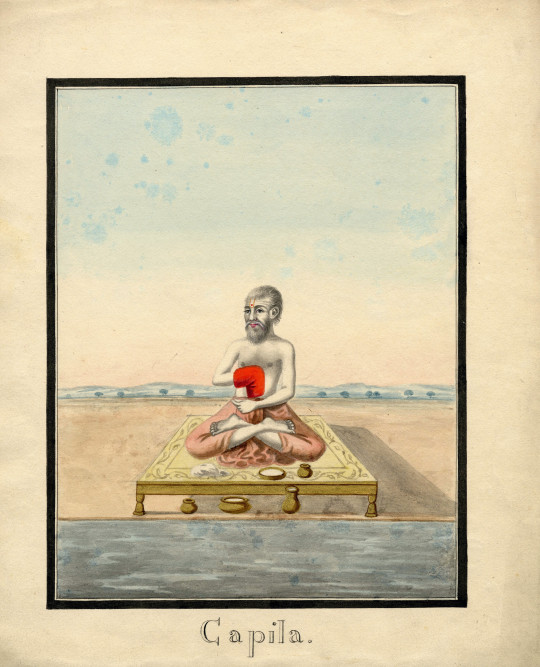
Samkhya or Sankya (/ˈsɑːŋkjə/; Sanskrit सांख्य), IAST: sāṅkhya) is a dualistic school of Indian philosophy.[1][2][3] It views reality as composed of two independent principles, puruṣa ('consciousness' or spirit); and prakṛti, (nature or matter, including the human mind and emotions).[4]
Puruṣa is the witness-consciousness. It is absolute, independent, free, beyond perception, above any experience by mind or senses, and impossible to describe in words.[5][6][7]
Unmanifest prakriti is matter or nature. It is inactive, unconscious, and is a balance of the three guṇas(qualities or innate tendencies),[8][9] namely sattva , rajas, and tamas. When prakṛti comes into contact with Purusha this balance is disturbed, and Prakriti becomes manifest, evolving twenty-three tattvas,[10] namely intellect (buddhi, mahat), ego (ahamkara) mind (manas); the five sensory capacities; the five action capacities; and the five "subtle elements" or "modes of sensory content" (tanmatras), from which the five "gross elements" or "forms of perceptual objects" (earth, water, fire, air and space) emerge,[8][11] in turn giving rise to the manifestation of sensory experience and cognition.[12][13]
Jiva ('a living being') is the state in which purusha is bonded to prakriti.[14] Human experience is an interplay of the two, purusha being conscious of the various combinations of cognitive activities.[14] The end of the bondage of purusha to prakriti is called liberation or kaivalya (isolation).[15] -- Wiki
Kapila is a Sage and founder of the Samkhya school. He lived sometime in (1500 BCE to 500 BCE), which places him before Buddha, and after Abraham of the Old Testament. His influence on Buddhist thought is the subject of much discussion.
#kapila#capila#samkya#samkhya#buddha#buddhism#philosophy#vedic#sage#indian#india#history#meditation#thought#mysticism
4 notes
·
View notes
Text
Understanding Samkhya Philosophy: The Foundation of Yoga
Yoga's popularity for holistic health is growing worldwide. Its roots lie in ancient Indian philosophy, Samkhya, which outlines 25 elements crucial for systematic yoga practice.
Yoga has become a popular way to improve physical, mental, and spiritual health. With the increasing number of yoga studios, the practice has become widespread across the globe. However, the roots of yoga run deep and are closely tied to the ancient Indian philosophy of Samkhya. This philosophy forms the foundation of yoga, informing its methods and practices. Understanding Samkhya is crucial for…

View On WordPress
0 notes
Text
Tracing the Ancient Wisdom-Religion in Theosophy and Samkhya
TRACING THE ANCIENT WISDOM-RELIGION: NOTE ON THE NATURE OF MATTER IN THEOSOPHY AND THE Sāṃkhya SYSTEM
“What we desire to prove is, that underlying every ancient popular religion was the same ancient wisdom-doctrine, one and identical, professed and practised by the initiates of every country, who alone were aware of its existence and importance. To ascertain its origin, and the precise age in…
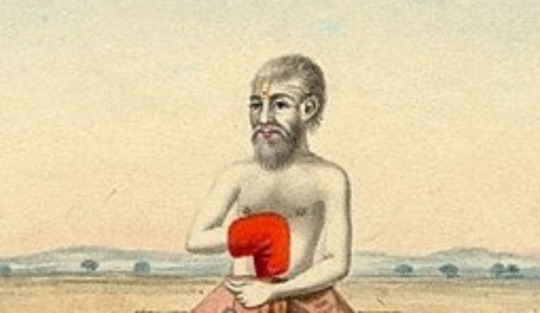
View On WordPress
0 notes
Text

1 note
·
View note
Text
#afterlife#atheistic views#Charvaka philosophy#criticism#god#Indian philosophy#Karma#Lokayata#materialistic philosophy#modern culture.#natural laws#Nyaya#perception#Pleasure#reincarnation#Samkhya#self-denial#skepticism#traditional beliefs#Vaisheshika#your spiritual journey
0 notes
Photo
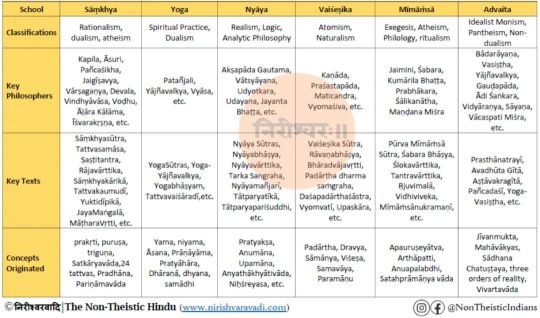
Check both slides. Follow @nontheisticindians On facebook as well. #Vedic #Veda #Vedas #HinduPhilosophy #VedicPhilosophy #Shaddarshan #Shaddarshanas #Shaddarshana #Hindu #Hinduism #HinduTexts #Samkhya #Yoga #Nyaya #Vaisheshika #VaisheshikPhilosophy #Mimamsa #Advaita #Vedanta #KarmaMimamsa https://www.instagram.com/p/Cje2yfprWz4/?igshid=NGJjMDIxMWI=
#vedic#veda#vedas#hinduphilosophy#vedicphilosophy#shaddarshan#shaddarshanas#shaddarshana#hindu#hinduism#hindutexts#samkhya#yoga#nyaya#vaisheshika#vaisheshikphilosophy#mimamsa#advaita#vedanta#karmamimamsa
0 notes
Text
Hindu Philosophy - The Essence of the Six Classic System


Hindu Philosophy is an attempt to outline the essence of the six classic systems of Hindu Philosophy, namely; Nyaya, Vaisesika, Samkhya, Yoga, Mimarinsa, and Vedanta. All other schools of thought are but variations of these six. Only one additional school is presented in the book, the Kasmir Saivism (Shaivism) which gives the most detailed analysis of the Ultimate Principle; however, it can hardly be fully understood util the other six systems are comprehended, the author states. To understand correctly Hindu Philosophy, it is paramount to realize that the basis of all the schools is the same. Together they form a graduated interpretation of the Ultimate Reality.
Six schools - six approaches to Hindu Philosophy
Each school is based on the same metaphysical doctrine, while discussing some particular aspect of the whole. For example: Nyaya discusses the means by which knowledge may be had of the Ultimate Reality; Vaisesika, the things to be known about that Ultimate Reality; Samkhya, the evolution of metaphysical doctrine; Yoga, the metaphysical doctrine in relation to the individual; Mimarinsa, the rules and method of interpreting the doctrine; Vedanta, the relationship between God, Matter, and the world; and Kasmir Saivism, the nature of the Ultimate Spirit and the Cause of the Initial Impulse. This outline is intended merely to show the interrelationship of these schools and how each assumes the doctrines of the other while it solves its special problem. In this introduction by Theos Bernard from 1947 to the classic philosophical schools of India, there is no attempt to prove or disprove but rather to present the system of each school.
The classic philosophical systems of India
From the book:
According to Indian tradition there is only one Ultimate Reality, but there are six fundamental interpretations of Reality. These are called the Sad Darsanas or "six insights," because they give man sight of the sensible verities and enable him to understand in the light of reason the super-sensible Truth attainable only through the revealed scriptures or through the experience of nis (sages). The word darsana comes from the root drs, "to see," and is the Sanskrit term used for philosophy. The six darsanas constitute the classic philosophical systems of India.
Download the free PDF e-book Hindu Philosophy here (226 pages/4.66 MB):

Hindu Philosophy
Read the full article
0 notes
Text
hinduism is so confusing, if god offers a q & a session in afterlife i will talk their ears off till they are forced to banish me to eternal hell.
4 notes
·
View notes
Text
"The Path of Action: Performing Duty without Attachment"
The Path of Action
Chapter 5 of the Bhagavad Gita, “The Path of Action: Performing Duty without Attachment,” highlights the importance of performing one’s duties without attachment to the results. This chapter emphasizes the importance of performing actions for the sake of duty and not for personal gain or outcome. The key message of this chapter is to perform actions with a sense of detachment,…

View On WordPress
#Action#Arjuna#Devotion Theology#Dharma#Eastern Philosophy#Epic of Mahabharata#Ethics#Hinduism#Indian Philosophy#Karma#Lord Krishna#Morality#Samkhya Self-real#Spirituality#Vedanta#Vedic Literature#Yoga
0 notes
Text


"Purusha is a super-consciousness. This is why it is almost impossible to translate the term "unconscious" into Hindi. There is a term: bodhi, i.e., enlightenment, a higher or super-consciousness, an extended superhuman consciousness, namely the consciousness of purusha."
- Carl Jung, Psychology of Yoga and Meditation
29 notes
·
View notes
Text
A Short Introduction to the Yoga Sutras

The Yoga Sutras are generally considered a foundational text of the yoga tradition. In this article we examine the context and background of the text, briefly explore its structure and content, and I also offer some reflections on the text’s relevance in modern times.
Note: I have decided not to use diacritics in this article. Diacritics are those little lines and dots above and below letters that tell you how to pronounce Sanskrit words. Normally I use diacritics in my writing, as they are essential for pronouncing Sanskrit correctly. However as this article is meant for non-scholars I have decided it would be better to try and write the Sanskrit words in a way that will make them easy to read and pronounce, so as not to put anybody off!
History & Context
Most scholars these days date the Yoga Sutras to somewhere between the 2nd and 5th centuries CE, with Philipp Maas placing it in the early 5th century.
The text is attributed to a sage named Patanjali. Biographically, we know next to nothing about Patanjali. The name is a compound word formed from the Sanskrit words pata (falling, flying) and anjali (the gesture of joining the hands together in reverence).
Yoga had already been around in some form or another for many centuries by this point. Therefore, Patanjali did not ‘invent’ Yoga. Nevertheless, this is the earliest comprehensive and systematic text on the subject that has survived.
Yoga was just one darshana or school out of many in ancient India. In terms of philosophy, it shares many similarities with the Samkhya school. But whereas Samkhya tends to emphasise the use of reason and knowledge to gain liberation, Yoga emphasises practical and experiential methods.
Philosophically, both the Samkhya and Yoga schools teach a form of dualism. This is a dualism between purusha (our true Self) and prakriti (everything else, including the body and mind) and the whole point of Samkhya and Yoga in a nutshell is to guide us towards the realisation of purusha, that is, our true Self. This is true liberation or moksha in Yoga.
Most of the ancient darshanas had their own sutra text. Sutra texts are known for their brevity. Basically, sutra texts are where the most essential teachings of a school are distilled into as few words as possible. Knowledge systems were handed down orally in ancient India and thus source material was kept minimal with a view to facilitating memorisation.
Other authors would then come along and write longer commentaries on these sutra texts. The Yoga Sutras have a rich commentarial tradition spanning many centuries. The first and most well known is the bhasya commentary by a certain Vyasa. Vyasa actually means something like ‘compiler’ or ‘editor’ so that probably wasn’t his actual name!
Some scholars even argue that Patanjali and Vyasa are actually one and the same person, though others would strongly disagree with this thesis. Either way, this commentary is indispensable when it comes to making sense of the sutras, and published versions of the Yoga Sutras tend to include the bhasya commentary or at least reference it.
As a final note, many scholars now use the term pātañjalayogaśāstra to refer to this text as a whole (sutras plus commentary), because that is the name our oldest existing manuscripts use. But to keep things simple we will continue to use the name Yoga Sutras!

Structure of the Text
The Yoga Sutras are divided into the following four padas or chapters:
Samadhi Pada: This is where Patanjali defines Yoga and then describes the nature and the means to samadhi, the goal of Yoga.
Sadhana Pada: Sadhana is the Sanskrit word for practice or discipline. Here the author outlines two forms of Yoga, the kriya yoga (yoga of action) and the ashtanga yoga (the yoga of eight auxiliaries or limbs). This is also where Patanjali discusses the kleshas, five ‘afflictions’ or impediments to Yoga.
Vibhuti Pada: Vibhuti is the Sanskrit word for power or manifestation. Supra-normal powers (siddhis) are said to be acquired by the practice of Yoga. However, the temptation of these powers should be avoided and the attention should ultimately be fixed only on liberation.
Kaivalya Pada: Kaivalya literally means isolation. This is the chapter on final liberation. The Kaivalya Pada describes the process of liberation, it explains how the mind is constructed and veils the inner light of the Self.
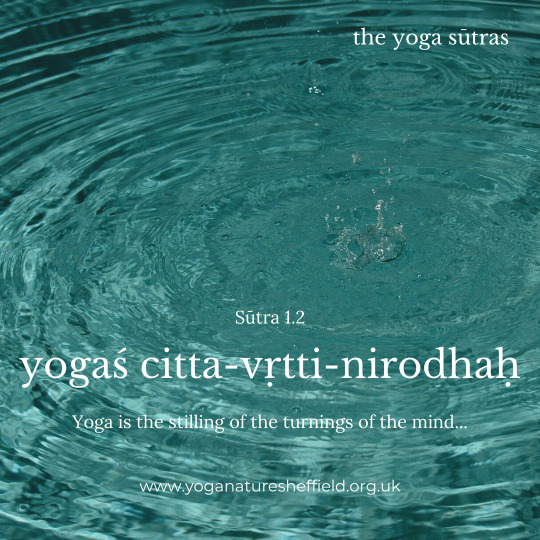
The Goal of Yoga
Not one for a lengthy preamble, Patanjali gets stuck right in there and clearly states the goal of Yoga in the well-known second sutra:
yogas chitta-vritti-nirodhah YS 1.2
Any Sanskrit sentence allows for a number of possible translations and this one is no different. A nice and accurate one is this one from Barbara Stoler Miller:
Yoga is the cessation of the turnings of thought
The reason I say this one is accurate is because a literal meaning of vritti is ‘turning’. Ever felt that thoughts are ‘going round and round’ in your head? Well this phrase nicely captures that! The vrittis in this statement refer to thoughts, emotions, ideas and basically any cognitive act of the mind. Patanjali lists five types of vrittis. These are, once translated:
Right knowledge
Error or false knowledge
Imagination
Sleep &
Memory
All such activities of the mind are products of prakriti and are completely distinct from the true Self, purusha, that pure awareness or consciousness which we are aiming to enter into through Yoga. The means prescribed by Patanjali in the first chapter of the Yoga Sutras to still the vritti states of mind are sustained practice (abhyasa) and dispassion (vairagya).
Specifically the practice offered is meditation, or keeping the mind fixed on any particular object of choice without distraction. Patanjali then describes a number of possible forms such meditation could take. By stilling all thought, meditation removes all objects of awareness. Awareness can therefore now be aware only of itself, of its own source, the true Self or purusha. This state is known as samadhi in Yoga and Patanjali makes it super clear that this state of samadhi is the goal of Yoga and thus the whole text is focused upon achievement of that goal.

Obstacles to Yoga
Patanjali mentions five kleshas, which can be translated as impediments or obstacles to achieving samadhi and thus Yoga. These five are as follows:
Ignorance
Ego
Desire
Aversion
Clinging
In the Yoga Sutras, and indeed in ancient Indian philosophy in general, the first item in any list is the most important and fundamental. It’s the same here. Ignorance here means failing to recognise our true Self or purusha and instead identifying ourselves with our body, mind and the material world. All of the other obstacles arise from this fundamental error.
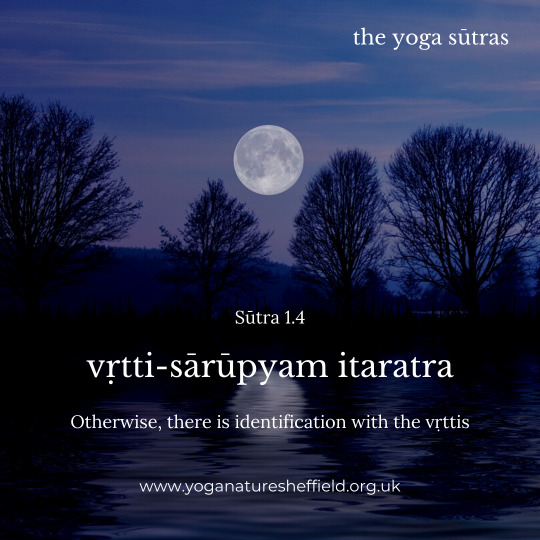
Yoga Psychology
Like most other schools of Indian thought, the Yoga school believed in the related concepts of karma and rebirth. According to this doctrine, we are caught in an endless cycle of rebirths called samsara and the purpose of following a path such as Jainism, Buddhism or Yoga is to bring an end to this cycle. Where the Yoga Sutras really shine are in interpreting this doctrine in a highly sophisticated ‘psychological’ way, to use modern terminology.
According to this Yoga psychology, the mind forms an impression of an object through the sense organs, which is called a pratyaya. Once this pratyaya or active image of this object is no longer of active interest to the mind, it becomes an inactive or latent samskara. A samskara is an imprint left in the chitta, somewhat like a sound is imprinted on a tape recorder, or an image on photographic film. In this way the vrittis, the activities of the mind, are retained as samskaras when they fade.
It is important to note that these samskaras are not just passive imprints but vibrant latent impulses that can get activated under conducive circumstances and can exert influence on a person’s thoughts and behaviours, even many years after the impression was made. What’s more, according to Yoga these samskaras can persist from previous lives. The chitta is thus something of a storehouse of these recorded samskaras, deposited and accumulated there over countless lifetimes. One is here reminded of the theory of the subconscious in modern psychoanalysis.
According to Yoga, karma is generated by the vrittis, and the vrittis, in turn, are produced by the kleshas. There is thus a vicious cycle of kleshas, vrittis and samskaras. To run through the whole cycle again to try and make it as clear as possible: vrittis are recorded in the chitta as samskaras, and these samskaras eventually activate consciously or subliminally, producing further vrittis. These vrittis then provoke actions and reactions, which in turn are recorded as samskaras, and the cycle continues endlessly, leading to much suffering along the way.
The whole Yoga project aims to bring this vicious cycle to an end and it is liberation from this mind created suffering that we are after as yogis. The Yoga Sutras are effectively a manual guiding us towards this end, this state of samadhi or complete meditative consciousness.

The Yamas and Niyamas
The second pada or chapter of the Yoga Sutras contains a famous exposition of five ethical restraints (yamas) and five ethical observances (niyamas) and these are relatively well-known in the modern yoga world. The first thing to get clear is that these yamas and niyamas are NOT original or unique to Yoga. All ascetic schools in ancient India had these ethical codes, and the exact same ones appear in Jainism for example. Sometimes, you even get more of them. Some yoga texts for instance list 10 yamas and 10 niyamas.
The five yamas listed in the Yoga Sutras are:
Ahimsa (non-harming)
Satya (truth telling)
Asteya (non-stealing)
Brahmacharya (chastity or celibacy)
Aparigraha (non-acquisitiveness)
The five niyamas are:
Shauca (purity or cleanliness)
Santosha (contentment)
Tapas (self-discipline)
Svadhyaya (study)
Ishvarapranidhana (devotion to the Ishvara or Lord)
Many of these could do with further explanation and commentary but there is not space in this present article. The other thing I want to stress is that these yamas and niyamas were not seen as optional extras for yogis. Rather, these were the bedrock of fruitful yoga practice. Patanjali and others refer to them as the mahavratam or ‘great vow’. Importantly, having listed the yamas, Patanjali devotes an entire sutra to reiterating just how central and non-negotiable these yamas are. Once translated, this sutra reads as follows:
[These yamas] are considered the great vow. They are not exempted by one’s class, place, time or circumstance. They are universal. YS 2.31
So, regardless of your social status, regardless of where you live, in which time period you live, and any other extenuating circumstances (such as your career), adherence to the yamas, including especially ahimsa, the foundation of them all, is an essential part of being a yogi as defined by Patanjali’s system.
Vyasa is even more emphatic in his bhasya commentary to the Yoga Sutras, and it is here that the link between ahimsa and vegetarianism is explicitly and unequivocally made, and several examples are brought to bear. Refer to the work of scholar Jonathan Dickstein to read more about the strong case for vegetarianism made in Patanjali Yoga.
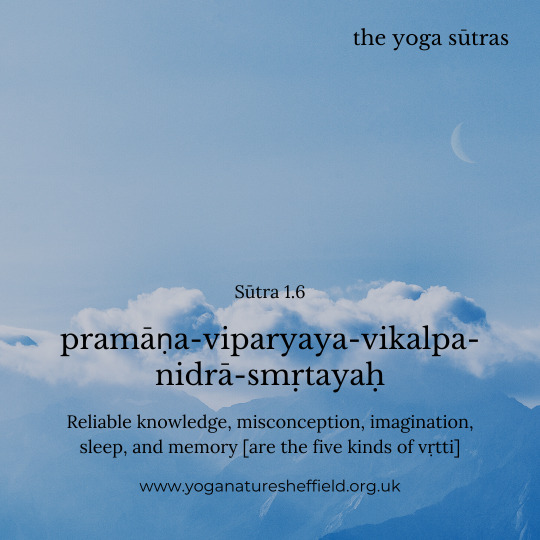
The Ashtanga Yoga
These yamas and niyamas are just the first two parts of Patanjali’s famous ashtanga or eight-part path. I would first like to clarify that this systematisation of yoga into a series of angas (a word translated by some modern scholars as ‘auxiliaries’ but more commonly rendered as ‘limbs’) was again not novel to Patanjali. Throughout the yoga tradition we find various similar schemes, predating and postdating Patanjali, including fourfold, fivefold, sevenfold and even fifteenfold schemes. I would also like to stress that, despite sharing the same name, this ashtanga yoga bears little relation to the modern postural form of yoga known as Ashtanga.
Following the yamas and niyamas then, we then have the following six angas:
Asana (posture): At last I hear you cry, postures! In Patanjali’s day meaning a steady and comfortable seated posture, asanas today comprise a set of physical exercises which stretch and strengthen the body. It is this aspect of yoga that has been most visibly exported to the West but too often stripped from its context as just one ingredient in a more ambitious and far-reaching sequence.
Pranayama (breath control): Prana refers to the universal life force whilst ayama means to regulate or control, but it can also mean to expand and lengthen. Prana is the vital energy needed by our physical and subtle layers, without which the body would perish. It is what keeps us alive. Pranayama is thus the control or expansion of prana through the breath, depending on which definition of ayama you use.
Pratyahara (withdrawal of the senses): This limb further deepens the above process by removing consciousness from all engagement with the senses (sight, sound, taste, smell and touch) and sense objects.
This is followed by the final three limbs collectively known as samyama: Dharana (concentration, fixation), Dhyana (meditation), and finally Samadhi (the latter of which Patanjali further divides into seven rather esoteric stages). These last three limbs are essentially different degrees of concentrative intensity and culminate in the realisation by the Self of its own nature.
Just to reiterate one more time, it is this Self-realisation, the state known as samadhi, that is the true goal of Yoga.
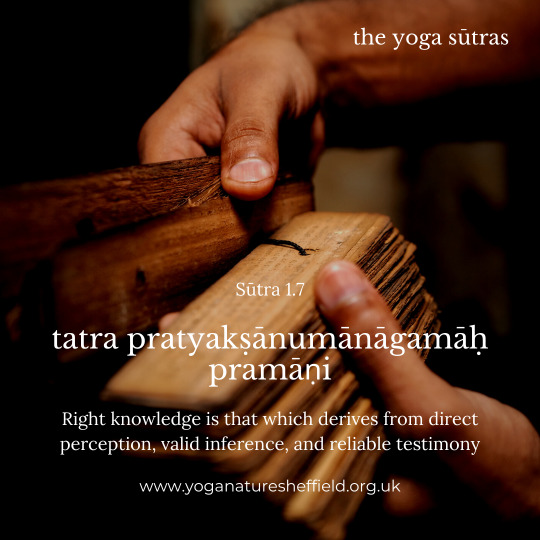
Relevance of the Yoga Sutras for Today
In this brief introduction we have of course only scratched the surface of this incredible text, and there is much more that could be said. But for now I want to end with some concluding reflections on the continuing relevance of the Yoga Sutras in the modern world.
One question that arises is whether Patanjali was prescribing a strictly ascetic path. And indeed, the general scholarly consensus has usually been to associate Patanjali's Yoga exclusively with extreme asceticism, mortification, denial and renunciation. However, there are dissenting vocies. For example, Ian Whicher has repeatedly and passionately argued that Patanjali's Yoga can be seen as enabling a more responsible living in and engagement with the world, and that Patanjali was not advocating total renunciation. For Whicher, following the path of Patanjali can lead one towards that integrated and embodied state of liberated selfhood whilst living, a state known as jivanmukti.
Regardless of whether Patanjali was historically preaching ascetism or not, the fact remains that the Yoga Sutras are full of valuable ideals and tools for the practitioner living in the modern world. Let’s face it though, this is a challenging path. As a scholar and practitioner I often perceive a huge disconnect between the kind of yoga I am seeing on the likes of Instagram and the teachings of the Yoga school as presented in the Yoga Sutras. After, all, the former is highly focused on body image, whereas the Yoga of Patanjali is all about dissociating ourselves from our body and mind and recognising our true Self. However, this does not mean that the two are necessarily irreconcilable.
Though there is absolutely no historical evidence that Patanjali and his followers were practicing postural yoga (that didn’t come until later with the emergence of the Hatha tradition) nowhere in the Yoga Sutras does it say that physical exercise cannot be part of one’s yoga practice. We just have to remember that as far as Patanjalian Yoga is concerned, such postural activity is just a further means or method on the path towards samadhi or full meditative awareness. This is why any so-called yoga that does not contain more internalised meditational practices but which focuses solely on physical exercise should not really be called yoga.
The Yoga Sutras remains undoubtedly the most famous ancient yoga text, and it is studied to some extent in probably every yoga teacher training course. To be honest, I personally feel that too much emphasis is placed on the Yoga Sutras, at the expense of other branches and other texts of the tradition. The Tantric texts, in particular, are still sorely neglected. One of my own aims in my work is to try and decentre the Yoga Sutras and provide a much wider overview of the history and philosophy of yoga and the other related schools of ancient India. This is not to take anything away from the Yoga Sutras, however, as it is without doubt an extraordinary text that continues to be highly relevant in the 21st century.
Further Reading
I have already mentioned some scholars whose work you may wish to refer to, such as Philipp André Maas, Ian Whicher and Barbara Stoler Miller. For a translation and commentary on the Yoga Sutras that is both scholarly accurate and reasonably accessible I would recommend that of Edwin Bryant published by North Point Press.
7 notes
·
View notes
Note
mother of the universe vibes. Light desi academia type.
Light desi academia is precisely what I'm aiming my vibe to me but the mother of the universe take is . . . pretty interesting again. Technically the Samkhya philosophy reiterates the exact thing that jeevatma isn't any different than the paramatma so it prolly makes sense? Same tattva, just the enlightenment missing from the samsaric soul. Either way, I'm flattered. Thank you ( ꈍᴗꈍ)
2 notes
·
View notes
Text
Danny Jones (Koncrete Podcast)
Jack Sarfatti: Mind-Driven UFOs, Warp Drive & Time Travel (August 2023)
youtube
Jack Sarfatti: Aerospace Scientists are Wrong about UFOs (September 2023)
youtube
Dr. Brian Keating: Why Astrophysicists are Highly Skeptical of David Grusch & UFO Disclosure (January 2024)
youtube
"I suspect that in general the relativity and quantum theories are two complementary aspects of a deeper theory that will involve a kind of cosmic consciousness. The cosmic consciousness or the 'Mahat' of India's Samkhya Philosophy is the basis of entire Creation."
-- Jack Sarfatti, 'Mysticism and the New Physics' by Michael Talbot
youtube
Monday, January 12, 2024
5 notes
·
View notes
Text
India has one of the longest running histories and most well preserved lineages of religious and spiritual practice. There, they have a group of bull or calf worship still today, the same which is mentioned in the Old Testament after the Hebrews escape Egypt and are found by Moses falling back into old (Egyptian) styles of worship. This cult of bull worship in Egypt was also verified by archaeological discoveries in Egypt at Saqqara. This shared bull worship, among other similarities, suggests that there were already global religious movements that had occurred before the advent of monotheism. India too, underwent the monotheistic revolution, out of which grew the Brahmanic school, the Samkhya school, and eventually the Buddhist school. Some scholars have pointed out that Abraham traveled extensively and had several foreign wives, the children of which returned to their countries of origin in adulthood and brought the monotheistic view with them. This is hazarded as a possible connection between the prophetic tradition and the Buddhist lineage. Although Buddha was not interested in what he could not prove, and did not claim any knowledge of Gods, the spiritual teachers who inspired him, such as Capila of the Samkhya school, and the Brahmanic masters who inspired Capila, were interested in meditation on Ultimate Reality as God, and may have had a connection to the same Prophetic lineage Abraham did. In any case, there is ample evidence for the intersection of cultures through trade, creating a global network of civilizations as early as the Bronze Age, which falls in the time between Abraham and Moses. It’s an interesting theory. food for thought!
#Buddhism#monotheism#Abraham#apis bull#bull worship#calf#god#history#ancient history#spirituality#Buddha#brahmanism#Jewish#India#Indian#comparative religion#religion#meditation#enlightenment
3 notes
·
View notes
Text

Schools of Hindu Philosophy - A small introduction
by - https://www.linkedin.com/in/dranadisahoo/
Philosophy arose in India as an enquiry into the mystery of life and existence. Indian philosophy or ‘Darshana’, literally ‘demonstration’. Philosophy in Greek root suggests love for wisdom. Indian counterpart of intellectual analysis would be ‘anvikshiki’. Uniqueness of Darshana systems lies in its overall constitution. Indian Philosophy refers to several traditions of philosophical thought that originated in the Indian subcontinent.
At the primary level there is a two way classification of these schools into Astika and Nastika philosophies, the Astika (from the Sanskrit word Asti = to be) and the Nasitka (from the Sanskrit word Nasti = to not be). Orthodox Schools of Indian Philosoph (astika) schools, originally called sanatana dharma, are collectively referred to as Hinduism in modern times.
The ancient Vedas are their source and scriptural authority. Hinduism consists of six systems of philosophy and theology. The terms to be and to not be are used in the context of the Vedas. Hence, the astika schools of philosophy are those which believe in the authority of the Vedas and the Nastika schools are those which do not believe in the authority of the Vedas.
Over centuries, India’s intellectual exploration of truth has come to be represented by six systems of philosophy. These are known as Vaishesika, Nyaya, Samkhya, Yoga, Purva Mimansa and Vedanta or Uttara Mimansa. These six systems of philosophy are said to have been founded by sages Konada, Gotama, Kapila, Patanjali, Jaimini and Vyasa, respectively. These philosophies still guide scholarly discourse in the country.
The six systems of philosophy were developed over many generations with contributions made by individual thinkers. However, today, we find an underlying harmony in their understanding of truth, although they seem distinct from each other. The Astika philosophical systems are six in number and there are three philosophical systems in the Nastika school. There are many layers to each of them.
6 notes
·
View notes